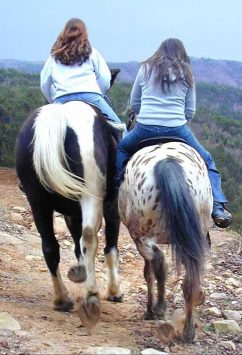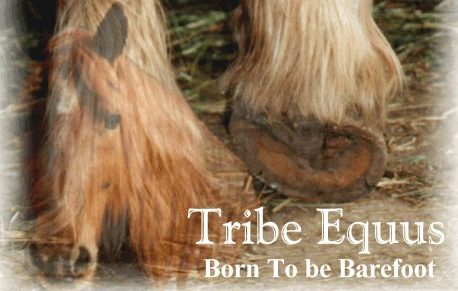
"All too little attention has been paid to the 'natural' foot. That's the way he was made, that's the way he should go."
~ J. R. Rooney, DVM - author, The Lame Horse ( © 1998)
What is High Performance Barefoot ?
A High Performance Barefoot Horse is not just a horse without shoes.
It is a change in long-standing beliefs about what is proper horsekeeping.
It is a horse that is given the basic biological requirements for health, long life and soundness.
It is a return to the way of the Natural Horse
As prey animals, equids evolved to roam continuously in search of food and water. They are hardy and strong, fast and surefooted. They have adapted to all types of terrain and climates, from the rugged, cold mountains in Iceland, to the dry hot savannas in Africa.
Nature, in her infinite wisdom, has equipped all members of Tribe Equus with everything they need to survive and thrive.
Living examples can be still seen in the wild around the world. Living examples can also be seen in a growing number of domestic horses returned to natural living by their owners.
In recent decades, researchers have studied wild horses seeking to understand the hardiness of wild equus and how that information can be applied to improve the quality of life of their domestic counterparts. Of particular interest is the tough, durable and virtually lameness-free wild foot. How is it that wild equids can roam for miles each day over very rugged terrain and still have stronger, healthier feet without shoes than shod domestic equids under the doting care of humans?
This question intrigued long-time farrier, Jaime Jackson. He has 22 years experience with horses' hooves; first as a farrier, and later as a hoof care specialist. Jackson observed and studied wild horses in the American West over a period of several years. He discovered that the largest single factor in the production of sound healthy wild hooves is environment. He noticed that wild, free-roaming horses travel an average of 15-20 miles per day over rocky, abrasive terrain. This harsh environment produces a foot that is shaped very differently from what is conventionally accepted as "normal" in the domestic horse world. The continuous intimate ground contact of wild bare hooves provides stimulation to the hoof structures allowing them to grow and adapt to virtually any terrain the horse needed to travel upon, something that is not possible to reproduce with shoes. Jackson was convinced that these revelations could be applied to domestic horses. He has adapted the natural hoof shape and environmental factors seen in the wild to the domestic horse and has had phenomenal success with improved hoof form and quality, lameness rehabilitation, and improved performance and overall health in the horses he has served.
In reality, what Jackson advocates is not new at all. It is a return to a very old understanding of the horse and working in harmony with its nature. While Jackson is known primarily by his pioneering work in returning to a natural foot, he is but one individual in a much larger (and growing) movement back to natural horsemanship.
Returning a horse to natural living conditions does not mean turning him loose on the range to join a wild herd. It does, however, require committed and educated effort on the part of the owner. We recommend you begin by reading.
Okay! Now you're interested ... so, what else do you need to know?
